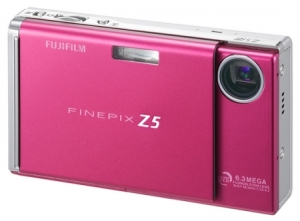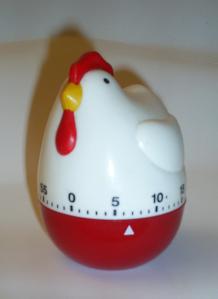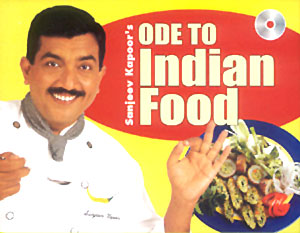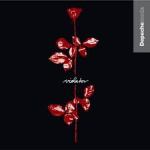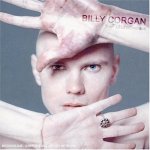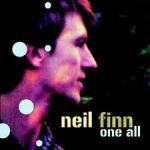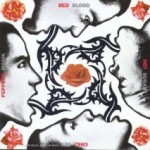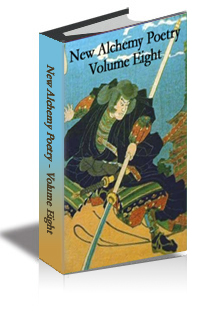Find us at http://www.newalchemyblog.wordpress.com
For articles on minimalism, poetry and music by zubyre parvez.
I was reading the blog Simple. Organised. Life. and the post Smartphones Can Replace These Everyday Items and lists the phone cleverly doing the following
Stereo
If I want a stereo, I’ll get an I-pod for on-the-go and for home.
Camera
If I want a camera I’ll get one of these, (preferably in grey/silver for me, please.)
Kitchen Timer
If I want a kitchen timer, I’ll get a chicken kitchen timer, better still.
Recipe Book
And if I want a recipe book, I’ll buy a recipe book.
That’s not all here’s what else the smartphone, does….it’s a…
- Compass
- Radio
- Map book
- Notepads
- Calendar
- Address Book
- Remote Control
In a prior post, the author provides information on a very simple mobile phone, that is very functional. However, I want something functional – to a point. It has to be well designed, too. But when all is said, a phone is a phone.
What’s what: A phone is a phone…a stereo is a stereo, a remote control is a remote control, a kitchen timer is a kitchen time and a recipe book is a recipe book. You get the picture.
Interesting book discussed in this article, The Book of Tea, a Japanese book, from one hundred years ago. I like the minimalism symbolised by the Japanese tearoom, they were into the same stuff as us – minimalism from old times. :). Here’s a little excerpt from the article.
Lessons are everywhere — even in something as seemingly unrelated to our lives as the traditional Japanese tearoom — we just need to stretch our imaginations a bit. A few principles from the Japanese tearoom or Sukiya are described simply and beautifully in the famous The Book of Tea by Okakura Kakuzo (my copy), a small book first published over 100 years ago. The Japanese conception of Sukiya, according to Okakura, may signify an Abode of Fancy, an Abode of Vacancy, … “Fancy” in this case does not mean decorative, ornate, or posh, but rather refers to the artistic and poetic impulse for which the structure was meant to house. The tearoom is made for the tea master, Okakura says, not the tea master for the tearoom. “It is not intended for posterity and is therefore ephemeral.” It’s not that posterity is completely unimportant, only that “…we should seek to enjoy the present more.” Recognizing the ephemerality of it all — whether we are speaking of the art of presentation or of the finer art of life in general — helps us to remain in the present, right here right now. This is the first simple lesson to take away. Yet it is the idea of vacancy that may have more obvious and immediate utility for you in terms of design and visual communication.
Vacancy and emptiness
The tearoom is an abode of vacancy, says, Okakura, because it is devoid or ornamentation except for the bare minimum placed to fulfill an aesthetic need of the moment. The room is essentially empty. Just as two pieces of music can not be enjoyed at the same time, one can not comprehend or appreciate the beauty of the moment without a clear focal point or “central motive.” Conflicting focal points would be a distraction. Abundance of vacant space allows for the clear existence of a focal point and the participation of the viewer to complete that which has been left incomplete or that which is only suggested. Whether we’re talking about the aesthetic of the tearoom or our own work, there is no place for clutter and the superfluous as these harm clarity and introduce confusion. There is no place for the nonessential or “a vulgar display of riches” as Okakura puts it. The key idea here is simplicity, of course, but also the idea of embracing change. Life is in constant motion and the only thing certain, in fact, is change. The items used to create a central theme in the tearoom are not fixed, but like life itself, will change depending on the occasion or the season. The idea of emptiness itself, then, also hints of the potential for growth and improvement and possibilities, that is, of change. Our ideas and our presentation — whatever kind of presentation we’re talking about — also must change to fit the time, place, and occasion (TPO, a common expression in business in Japan).
YOU MAY HAVE READ some of my poems encased in my prior articles. Articles or ‘blogposts’ can become literary works of a sort in the making, if you aren’t the ranting style of Blogger, which would be fair enough.
Suffice to say, depending on how you choose to write, these later can make up the content of complete books. Therefore, to me, articles are an artform: Art-ticle = Art. Just like poetry and paintings are, at the root of it.
In no particular order, here’s a selection of the poetry books I have self-published online this year, it’s on a free ebook site. You can too costs start at $5 per e-book. These are Google pics (see above).
I don’t think I want to use yet another different cover in future from Google search engines. There are number of Samurai warrior art pictures I used for the e-books.
I need a simple logo for New Alchemy Poetry, like a picture of an elixir bottle symbol as a logo and a top-notch designer to create it for me. Nothing more than a logo. That would help simplify the presentation of the poetry, the product, and condense it into one single image, repeated. That’s how I want to do my minimalist art, at least for these poetry books, personally speaking.
Over this period of writing poetry this past year, I realise that, after some 14,000 downloads in total (and counting), that perhaps I could do myself a favour by beginning to charge for a super delux version of these poems in one bumper edition, with bonus material. That would be over 100 poems or more.
I feel it will have further impact if I reorganise the material into themes, perhaps. I am working on alternative collections which will do that, and to splice together the poems of similar theme from the material we have here, perhaps to form a series of larger poems.
There are other more upmarket sites for my material that I am considering now. I think it’s good some of my work is rooted with this fab site, though! I am still honoured for their promotion and their services continue to assist.
To download my poetry, for free you are welcome to do so. The links are as follows:
http://www.free-ebooks.net/authors.php?author=Zub
http://www.free-ebooks.net/authors.php?author=Zubyre+Parvez
http://www.free-ebooks.net/authors.php?author=Zubyre
Do let me know what you think, I would be interested to hear your feedback. You can leave comments at the site, here or on Twitter, always welcome. Thankyou.
I love music, (yes, even A-ha) and the albums I like, I replay them over and over, I end up loving to death…I wonder if you are the same?
Anyway, so I decided that I can’t keep listening to these old songs of the past ten years. Of course, there’s more. There’s tonnes. Nostalgia is a very heavy emotion
, that can be debilitating if you’re anything like me, or comforting in small doses. I love 80s synth. It’s just something to do with my childhood. But I don’t have time to get lost in the past, all the time now, and consciously try to stay present. Yes, the above are classics, soundtracks to the course of life walked thus far in actual fact. There are all sorts of memories and feelings that these albums contain for me. They are records in every sense of the word. Of the times, our culture, and our intimate emotional world of our personal lives.
I affirm the importance of these experiences, and might listen to these albums, when I reminisce. These records having shaped me as a person, and inspiring me. But in order to live in the present more fully, we have to embrace the present. It’s the emotion of being too stuck in the past that I’m concerned with here.
So I threw these out. — No — I felt alot happier for it. Although records are material, they can still have an existence in one’s heart, that’s how powerful music is . That said, for the most part, the emotional clutter is cleaned out, and you might be opened to listening to new inspirational music, finding new music to reflect who you are today, as well.
A short and sweet post, for today. Look here! I am not a fashion expert, and don’t claim to be such. So I haven’t included the prices of the above and where to find them. I like to think that I, hopefully, do have some taste in clothes, though. As well as style, comfort is essential. This is where the minimalism comes in: the minimalist may favour clothes that are are not too heavy or burdensome to wear, that feels good. I just want to give a few examples of such minimalist clothing and footwear, you might have a few articles you might want to add to this list or of your own.
I used to wear my black leather jacket alot. It’s a tough, heavy duty item, that I suppose will last a while because it’s durable. Super comfortable it aint, especially when I could be wearing something like a sleeveless jacket (see above). The difference is in the sleeves: without sleeves your arms are freed up, it’s really comfortable.
The centre pic is of a girl wearing 3/4 length trousers — which feel light to wear. Blokes can wear 3/4’s too, just the shorter length brings a lightness, but you might prefer something slightly looser and casual.
The pic on the right is of a pair of plimsoles. I bought an Adiddas brand of these in understated black. Laces are long tings to use a local London expression! Excuse the pun. They are a hassle to tie up and they come undone. So there you have it, other minimalists are sure to have other takes on this so I am just giving my slant on the topic.
My 257 words for today.
Simplicity, decluttering and minimalism create beautiful living spaces. They are beautiful in the sense that they feel light and spacious and are calming in their common hues of white, black or grey. I like the paper lanterns you can put over a lightbulb, it makes the room airy and light – good idea. Let’s have a look at one of those first:
Zen or any other Monasteries also have an empty, clean and fresh feel about them. I can vouch for one I went to some 75 kilometres north of Bordeaux, in Plum Village, France. It’s where Thich Nhat Hanh’s and his Sangha live, pray, sing.
Elsewhere in the world, some Buddhists went up a mountain to meditate and generated enough heat from their bodies to dry a wet towel! Pretty well known now. What I am saying is, they are certainly not cold.
Some people like meditating because it appeals to their urban coldness, the modernist writers have documented the isolation of the city, the cruel indifference of it’s grey slabs, of wondrous anonymity?…Others for respite and healing from the scolding fires of love. Ideally, life, like art, ought to be merry and gay.
Some elements of modernist and abstractionist art favour a cerebral look at life, devoid of colour, this isn’t a respite from emotion, but coldness from the outset, the predominance of the mind, expressing itself. Greys! You don’t want to be of that species.
Chinese Classical dance, so colourful, warm and kind, is a number one artform, is a perfect example and puts what we want to say most vividly and masterfully. Check these two out:
Bamboo has a minimalist characteristic, it works it’s way around many functional uses, making life simpler – the ancient Chinese used it for everything almost. After reading this, you will know bamboo solves life’s problems both then and today – in 14 ways. You can build a house live in it, eat it in your meal, use it to run your ecosystems, recreate civilisation, as you will see. Read this list to get the low down. What I like about bamboo that appeals to the minimalist mindset too, not only it’s simple and natural elegance, but it’s smooth texture, it makes us closer to nature itself, away from the urban hubbub of machinery and computors. The minimalist is concerned with sustainable renewable energy, green living, to a point, as wasting finite resources such as coal, oil and so on, can lead to lack of usable energy resources in the future. The minimalist always only uses what they need, nothing wasteful or superfluous, so it is the minimalist naturally has at least some concern for greener living.

Beautiful Bamboo – A poetry all on it’s own.
1. Musical Instruments & Equipment
Many of us have seen the bamboo flutes from Kung-Fu episodes, or the great pipes commonly associated with Pan, or panpipe moods CDs which has got covers of classic ballads like those of a certain Celine Dion, Wet Wet Wet, or whoever!…Although mostly associated with the wind instruments, bamboo is used to construct a variety of percussive instruments. Examples include the xylophone.
Pic of xylophone coming up later
2. Footbridges

Kampong Cham bridge in Cambodia: the longest bamboo bridge in the world.
3. Alternative Energy
Some varieties of bamboo can grow up to a foot a day. True. Another ‘green’ use of bamboo is as a building material for alternative energy installations. In many rural settings, bamboo is a primary material for building waterwheels for hydropower. Bamboo is also used to make blades for wind turbines. Without getting silly with it, bamboo can be used. There are novelty gimmicks, which uses bamboo in a way that I wont include here — those are plain ridiculous or just too futuristic to mention in this list! When I wanna drive a bamboo car assume I’m not a writer anymore.
4. Kitchenware
Bamboo cutting boards are quite kitsch and much easier to clean than typical plastic cutting boards.
Bamboo is a popular material for traditional Asian kitchenware as well. For instance, bamboo steamers have been used in Asia for centuries to cool rice and steam vegetables, but have more recently made their way west and bring an elegant, healthy way to steam—rather than boil vegetables—preserving flavour, nutrients, all that.
And since you can have the versatility and durability of bamboo as kitchenware items, why not consider bamboo for…
5. Lunch

…Or dinner, for that matter. Bamboo shoots have been a popular food staple in Asia for centuries.
Beer
Despite its myriad of uses within the culinary world, it’s safe to assume that bamboo’s most appropriate use is in making bamboo beer.
Consuming traditional grains like barley and hops, beer made with bamboo offers a unique flavor. Making bamboo beer requires a process of fermenting the rich natural sugars of the plant’s sap. This beverage is naturally enjoyed in Asia where bamboo is plentiful, but is also found extensively in Africa, though only during rainy seasons.
6. Air Fresheners
7. Healthcare Lotions
When heated, bamboo charcoal is made into a medicinal vinegar, used in places like Japan to treat minor skin conditions like eczema. Bamboo products like this are also known for anti-bacterial and anti-fungal properties.
8. Clothing
Bamboo has become a popular choice in durable, air permeable, soft fabrics, and is used in to make bedding, underwear, baby diapers, blankets, bags, hats, and a whole bunch of other stuff. Including hot stuff.

The undergarment above too, is made of bamboo. It’s not from a novelty gimmicky catalogue, this is common practice, hence I have included it here.
Art & Writing Materials
Artwork created with or from bamboo is still very much part of a living tradition and practiced by cultures throughout the world.

In early Asian civilizations, bamboo ‘slips’ were regularly used as writing surfaces. The Art of War by Sun Tzu was composed on a bamboo slip in the 6th century. A slip is a tablet read down the bamboo stalk.

10. Smoking Paraphernalia
Bamboo was used to make the cigarette holders popularized by films in the 1920s.
11. Computer Hardware
The use of bamboo for aesthetic purposes seems ideal within the world of computers. Given its natural look and durability, bamboo has been used to enhance computer hardware. Bamboo is used for keyboard covers, computer mice and other types of computer hardware in the field.
Bamboo is symbolic here too, reflecting the green design of the new Asus, but many cases of Fujitsu brand prototype laptops have been constructed of solid bamboo rather than just a veneer, making them more biodegradable. In the meantime, however, bamboo fibers are used in packing material for Dell computer equipment, bringing the computer hardware industry one step closer to a greener future.

12. Construction Scaffolding
Bamboo is used extensively throughout the world as an inexpensive, plentiful and sustainable material in a variety construction projects and scaffolding is no exception. The strength and durability of the plant easily bears the weight of workers, their tools and other materials.
Bamboo has incredible strength, meaning that it can withstand significant amounts of stress and is comparable to steel’s strength. China, where bamboo is used in much the same capacity as steel is in North America. I have spared you a picture of scaffolding.
13. Fishing Gear
is commonly used in the construction of fishing poles. But did you know that bamboo is also used as a support for large fishing nets, gorgeous photo below.

In some rural settings, such as those found in places like Vietnam, bamboo is used in the construction of fishing boats, too.

The boats are small and maneuverable, allowing fishing to take place in narrow areas where commercial vessels typically can’t go. This allows the fishermen to deliver their hauls directly to shore. It’s not the one’s you get in theme parks, where you’re getting all splashed up with friends eh!
14. Weaponry
Bamboo swords and staves (a long stick or staff) have been used for thousands of years—as training implements in the kendo tradition of Japan and in India bamboo staves are constructed for stick fighting, a form of martial arts training. These traditional disciplines and the use of bamboo weapons remain.
Just like as used in fishing poles, bamboo is a trusted material for making bows and arrows due to its strength and ability to bend without breaking. In the South Seas, bamboo blowguns and darts were staples of indigenous hunters and ancient Samurai warriors utilized bamboo to construct the hilts of their katana blades. Scabbards for the weapons were constructed from bamboo.
read volume eight of this dizzying & vastly eclectic, broad and tapestry like
construction, an interconnected work that unravels itself through reading the
other volumes but equally pleasurable and philosophical, quirky and light to
read as a singular work.
Read more: http://www.free-ebooks.net/authors.php?author=Zubyre+Parvez#ixzz1ZxJZnH9N
‘Old photos I was dumping
That once dumped me!…’
From Living Arrangements,
by Zubyre Parvez
We all keep photos of places, ourselves, and the people we care about, whether digital or otherwise.
Sometimes, they accompany us on trips abroad, ( I mean your Aunt Agatha or the photos themselves) that make up our memories of good times. Initially, that’s fine.
Later, after the travels of my early years, I could boast that I had been there, got the t-shirt…but wait…
The photos lost their sparkle as they became not so shiny trophies of the ‘good times’, after I invested too much emotion in the good old days — not allowing the gift of the present make itself known. I had lost expectancy and enthusiasm with the passage of time, so the present constantly paled in comparison. They became the ‘defining’ moments, but when we define, we limit not only the experience but our future possibilities of life, as well. Yes they were the experiences that shaped us, but we don’t need to fit any mould, including the past, that’s just old, that very word ‘mould’ is restrictive.
I decided to sort the over-investment of emotion to those silly photos…by throwing out all the unnecessary snaps. For example, if you got your bighead best friend in five of your photos, keep just the one, and so on. And all the photos you took of ‘anything’ in your holiday enthusiasm, you can fling those out — I mean things like the coach station with your gran looking all weary, or where the empire state building looks wonky.
I decided that landscape photos were particularly irksome to me — forgive me, if that’s your thing, — but I’m a Londoner myself, a citizen, at heart, and I’d rather experience nature in the moment when I get the chance, then photograph it too much, — what’s the point in snapping something in touristy zeal if you don’t experience it fully first? Zen Habit’s Leo Babuta, tells of how we should rely on ‘pure memories’, I could not have put it any clearer…instead of relying on technology too much…
As I threw the irrelevant out, I have less baggage to carry about. And my laptop digital photo storage space is a bit more mindfully used, that’s less of a headache now.

